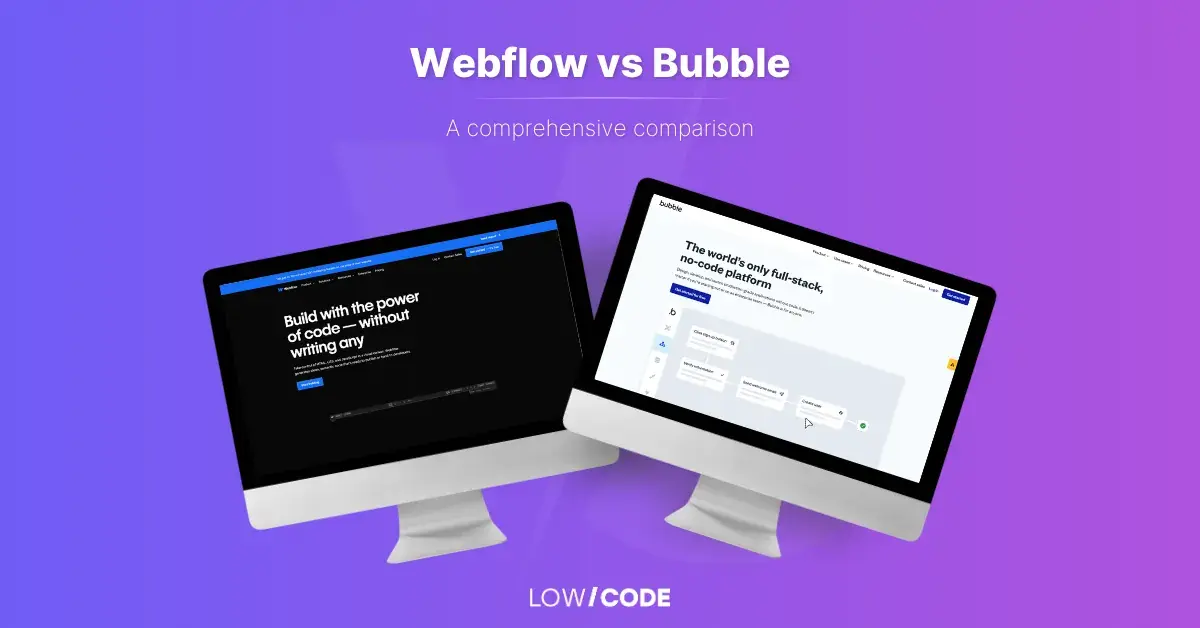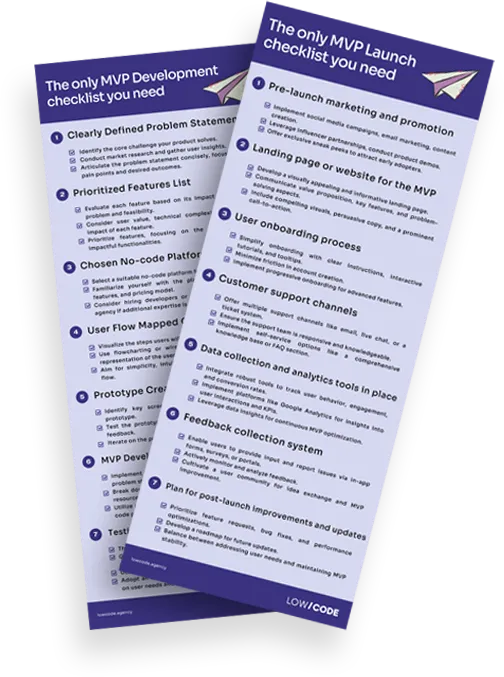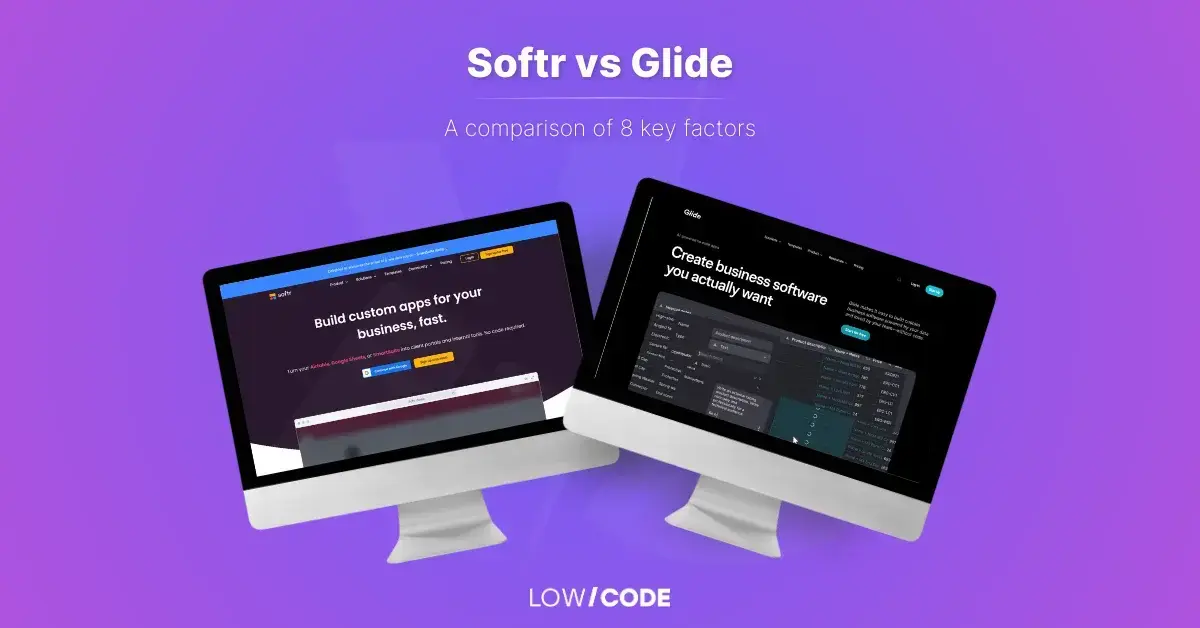
Webflow vs Bubble: A comprehensive comparison
We know it can be complicated to understand when to use Bubble versus Webflow to build websites and web applications without coding. There's a lot of confusing information out there. That’s why we've tapped into the minds of our certified developers, who use these platforms daily, to bring you a complete breakdown of Webflow and Bubble's features and ideal use cases.
Our goal is to clarify what each no-code platform is great for, what their strengths and weaknesses are, and which one may be the better fit for your specific project needs.
Don't worry—we'll explain everything in a clear, easy-to-understand way, so you don't need to be a technical expert to follow along.
Let’s get started!
TL;DR
Bubble is best suited for building complex, interactive web applications with robust data management and workflow capabilities. Webflow is aimed at designing responsive websites with strong content management and e-commerce features. While there are some edge cases where their capabilities overlap, they generally serve different primary use cases.
What is Bubble.io?
Bubble.io is a visual programming platform that enables individuals to create web applications without the need for traditional coding. It provides a user-friendly interface where you can design the layout of your application and define its functionality using a system of drag-and-drop elements. There are a lot of components and design elements to choose from and create web apps that range from marketplaces to SaaS and MVPs.
Bubble offers a rich selection of plugins, themes, templates, and database management functionalities for enhanced customization. Bubble.io essentially simplifies the process of web application development by removing the need for coding. However, it's not a tool for creating basic websites, but rather for building complex, data-driven web applications. It requires a learning curve and problem-solving skills to use effectively.
What is Webflow?
Webflow is a web design and development platform that allows you to create responsive websites without having to write code. It provides a visual interface where you can design and build your website, and automatically generates the HTML, CSS, and JavaScript for you.
With Webflow, you can create complex layouts and animations, and style your website using a wide range of design tools. You can also add interactions and dynamic content, such as forms and CMS-powered blogs.
Webflow also provides hosting and content management features that allow you to publish and manage your website without the need for additional tools or services. You can update your website's content, add new pages, and even collaborate with team members directly within Webflow.
Intended use: The key difference between Bubble and Webflow
Both platforms enable visual development, allowing users to design and build using drag-and-drop interfaces. They provide a wide range of pre-built UI components and templates to speed up development. Users can create responsive designs that adapt to different screen sizes and devices. Most importantly, we should make very clear where the key difference between them lies:
Webflow is primarily focused on building websites, while Bubble is geared towards creating web applications and internal tools.
What does this mean? Well, websites are typically collections of static pages that display information. When you visit a website, the content you see is pre-built and doesn't change unless the website owner manually updates it.
Some common examples of websites include:
- Online portfolios or resumes
- Company brochure sites with information about their business
- Blogs or news sites where articles are posted regularly
Web applications, on the other hand, are interactive and dynamic. They function more like software programs that you would install on your computer or phone. The content and features change based on user interactions and data inputs.
Some examples of web applications include:
- Online banking portals where you can transfer money and pay bills.
- Project management tools that allow teams to collaborate and track tasks.
- Marketplaces, where people can post offerings and exchange products and services.
The key difference is that websites are mainly for displaying information, while web applications are for performing actions and tasks.
Comparing Bubble and Webflow
Design approach
- Webflow follows a more traditional website design approach, with a strong emphasis on visual design and layout.
- Bubble takes a more application-centric approach, with a focus on functionality, data management, and workflow automation.
Learning curve
- Webflow has a relatively easier learning curve, especially for designers and those familiar with web design principles.
- Bubble can have a steeper learning curve initially, as it involves understanding concepts like data modeling, workflows, and logic programming.
Audience and use cases
- Webflow primarily targets designers, creative professionals, and businesses that need visually appealing websites, portfolios, blogs, and e-commerce stores. It's commonly used for creating landing pages, marketing sites, and content-driven websites.
- Bubble, conversely, focuses on entrepreneurs, startups, and individuals seeking to create custom web applications with intricate functionality. Bubble is perfect for developing interactive applications like social networks, marketplaces, and SaaS products. R
Security and compliance
- Webflow: With a strong focus on security, Webflow delivers features such as SSL encryption, automatic backups, and DDoS protection. Additionally, Webflow maintains compliance with GDPR and other data protection regulations.
- Bubble: Similarly, Bubble underscores the importance of security by offering SSL encryption, secure authentication, and safeguards against common web attacks. Bubble also adheres to GDPR and various data privacy regulations.
Getting to know each platform
As we’ve seen, while both Bubble and Webflow are no-code platforms, they were designed with different primary targets and use cases in mind. That’s why we consider that doing a rigid one-to-one comparison of their respective features wouldn't provide the full context you need to properly evaluate them.
Instead, we'll dedicate a section to providing an overview of Bubble - its strengths, ideal uses, key features, and the types of projects it excels at creating. We'll follow that with a separate overview focused on Webflow, highlighting the areas where it truly shines.
Bubble: Best features
- Workflow builder
Bubble's visual programming interface allows you to create complex logic flows and automate processes by connecting different visual "blocks" together. This makes it easier to build sophisticated features like multi-step forms, approval processes, and conditional rendering without writing code.
- Data management
Bubble provides a visual data modeling tool that lets you visually design and manage your application's data structure, including relational databases. This makes it great for building data-driven applications like CRMs, project management tools, and internal company workflows. In addition to its native database, Bubble can connect to external data sources like Google Sheets, Airtable, and cloud storage services
- User roles & permissions
Bubble has built-in user authentication and the ability to define granular access permissions. This makes it ideal for building applications that require different user roles like admins, members, guests, etc.
- Plugin ecosystem
Bubble has a directory of pre-built plugin elements created by the community and Bubble's partners. These enable adding advanced functionality like payment gateways, charts, and analytics to your applications.
Learn more about Bubble in our full review
Webflow: Best features
- Pre-built templates & components
Webflow comes with a library of stunning pre-designed templates and UI component building blocks. This allows you to create beautiful, modern websites very quickly by customizing pre-built layouts and elements.
- Content management system (CMS)
Webflow has a built-in CMS that lets you manage website content, blog posts, portfolios, and other content collections without relying on third-party integrations. Content editors can update content through a user-friendly interface.
- E-commerce functionality
In addition to standard websites, Webflow provides e-commerce capabilities to build online stores. You can add product collections, shopping carts, checkout flows and receive payments - all visually constructed.
- SEO & marketing tools
Webflow generates clean, semantic code ideal for SEO. It also includes tools for marketing like forms, email campaigns, social sharing capabilities, and analytics integration.
- Code export
You can take your website built entirely within Webflow and export it as HTML, CSS, and Javascript files. Depending on the pricing plan you're in, you'll be able to host your website on a different platform or make further customizations outside of Webflow. There are some limitations to the export feature, for example, certain Webflow-specific features, such as CMS collections and e-commerce functionality. Bubble, on the other hand, won't let you export the application logic or user interface as code.
Read our complete review of Webflow
What we've built with Bubble
Copious.Land
Eric Quay, founder of Copious.Land, wanted to build a centralized marketplace for land investors to discover, evaluate, and acquire wholesale property opportunities. The existing methods were informal and lacked a user-friendly platform.
Using Bubble's no-code development platform, we were able to rapidly build and launch Copious.Land in just 8 weeks. The end result is an intuitive marketplace that provides land investors access to a vast database of listings, satellite imagery for evaluating properties, and a way to connect with other investors - solving the key pain points Eric originally identified.
MaidManage
MaidManage is an application that we developed using Bubble, designed to help maids and domestic workers oversee their operations more efficiently.
One of the standout features we developed for MaidManage is the rate calculation engine. It comes with preset formulas for common cleaning tasks, which makes it easy for maids to generate accurate estimates for their clients. Additionally, the engine can be customized to accommodate personalized estimates, providing flexibility to meet the unique needs of each client.
Also, to ensure secure payment processing, MaidManage integrates with Stripe Connect. This enables clients to pay for estimates online, and once paid, the estimate automatically creates a new booking on the maid's calendar.
- See more of Bubble in action!
What we’ve built with Webflow
Unofficial Fun
Unofficial Fun is a platform that helps sports fans easily stay up-to-date with their favorite teams' schedules. We used Webflow to design and develop:
- A newsletter system that delivers monthly schedule updates to subscribers.
- A free schedule maker tool where users can create personalized schedules of up to 7 games, downloadable as lock screen images for quick access.
- A sales landing page showcasing pricing plans and enabling subscription purchases for unlimited schedule creation.
The web gives passionate fans a quick way to get customized, updated schedules for the NFL, MLB, and other leagues delivered straight to their devices.
SecondShare
SecondShare is a real estate company that needed a brand new website to showcase its property listings and stand out in a crowded market.
We designed and developed a custom website that captures SecondShare's brand essence, with an improved browsing experience, immersive visual galleries that highlight listing photos and features, and a content management system that allows SecondShare's team to update their listings and content easily.
Webflow, with its design flexibility and CMS capabilities, was the key to delivering a powerful marketing tool that helps SecondShare attract qualified leads and drive more sales in their local real estate market.
- Explore more projects made by our Webflow developers!
Edge cases: where Bubble and Webflow capabilities may overlap
Yes, we know we stated that Webflow and Bubble excel in different areas, but there are certainly still some scenarios where their feature sets can overlap. These are the "edge cases", in-between zones where the ideal platform choice becomes less clear-cut. We're exploring these scenarios because they represent the more complicated, nuanced parts of deciding between the two platforms. Let's dive into these cases and see how Webflow and Bubble can each be viable options.
Webflow as a Bubble alternative
- Simple membership sites: If your membership site is content-driven with limited interactivity, like a blog with exclusive member sections, Webflow can handle it. You can create member-only areas with password protection and showcase content with a focus on design. However, for features like user subscriptions or dynamic content based on user roles, Bubble would be better.
- Landing pages with lead capture forms: Webflow excels at building beautiful landing pages with forms to capture leads. While Bubble can do this too, Webflow's design-centric features and integrations with marketing tools might make it a better fit.
- Portfolio websites or simple web brochures: Showcasing your work or company information with a great layout is a perfect fit for Webflow. Complex animations or interactions might be easier with Webflow's interface.
Bubble as a Webflow alternative
- Websites with light database functionality: If your website needs a basic database to store and manage some data, like a simple event calendar or a directory listing, Bubble can handle it. For more complex data operations, Bubble would be the better choice.
- Websites with integrations to external services: Bubble is a very good option when you need to integrate with external APIs and services. If your website needs to connect to a specific data source or service, Bubble's development flexibility might be advantageous.
The bottom line
In conclusion, while both Bubble and Webflow are powerful no-code platforms, they are designed for different primary use cases.
Bubble shines when it comes to building complex, data-driven web applications with robust workflow automation, user role management, and third-party integrations. If you need an internal business tool, project management system, or custom interactive software, Bubble is likely the better choice.
On the other hand, Webflow is the ideal platform for creating visually stunning, content-rich websites with impressive design flexibility. Its strengths in areas like the CMS, e-commerce functionality, and pre-built components make it perfect for websites, marketing campaigns, and online stores.
Discover the power of no-code and low-code tools with our expert assistance! We're an expert Webflow Agency and Bubble Agency and we're here to help.
With over 273 successful projects under our belt, we have the experience and expertise to bring your project to life.




%20(Custom).webp)








.png)
